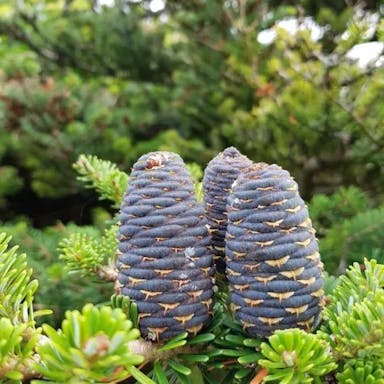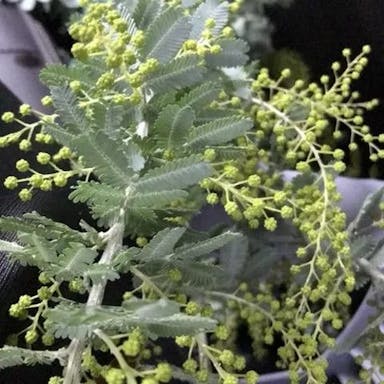Dead rat tree, known as Adansonia digitata, is tree. It is deciduous tree that belongs to Malvaceae family. This tree is native to Africa, found in dry regions of sub-Saharan Africa. Adansonia digitata tree is known for appearance, with thick, bottle-shaped trunk that can reach 25 meters in height. Trunk is covered in smooth, grayish-brown bark, which becomes wrinkled and fibrous as tree ages. Branches of this tree spread out sparse and irregular. During flowering season, Adansonia digitata tree produces large, showy flowers that are white or cream in color. Flowers have strong, sweet fragrance and are pollinated by bats and insects. Tree blooms at night, attracting pollinators with scent. Fruit of Adansonia digitata tree is large, woody capsule that contains seeds embedded in powdery pulp. Fruit is edible. It has tangy flavor and is rich in vitamin C. Adansonia digitata is hardy tree that can withstand drought and conditions. It is often found in arid and semi-arid regions, where it serves as resource for communities. Tree is also known for cultural and medicinal significance, with parts of plant being used for remedies. In conclusion, Adansonia digitata, or Dead rat tree, is remarkable plant with appearance, flowers, and fruit. It is symbol of resilience and adaptability, thriving in environments.
Dead-rat-tree
- Scientific name
- Adansonia digitata
Basic Information
- Malvaceae Family Adansonia Genus Dead-rat-tree Species
- Malvaceae > Adansonia > Adansonia digitata
- 83%
- The Completeness of This Encyclopedia
Please help us complete the encyclopedia, Terrarium is a encyclopedia service to be completed with everyone in the world. Currently, this page is 83% complete. For more information on how to contribute, please click here.
- Tree
- Height
- 5000cm ~ 25000cm
- Flower Color
- Leaf Color
- Anthesis
- summer
- Sunlight Exposure
Full Sun Long hours of sunlight from morning to afternoon Partial Shade A location in the shade of a tree or where either the morning or afternoon is shaded Full Shade A place where there is no direct sunlight
- Full Sun
- Hardiness Zones
This is an indicator to know to which zone each plant can winter. Knowing the zone of each plant gives you an idea of the cold temperature resistance when grown in the ground without a roof. 2: -42.7 to -40.0 3: -39.9 to -34.4 4: -34.3 to -28.9 5: -28.8 to -23.3 6: -23.2 to -17.8 7: -17.7 to -12.2 8: -12.1 to -6.7 9: -6.6 to -1.1 10: -1.0 to 4.4 11: 4.5 to 10.0
- 10-12
- Cold resistance
- Poor
- Heat resistance
- Excellent
- Habitat of origin
- Africa
- Growth Rate
- Slow
What is Dead-rat-tree (Adansonia digitata)?
What is Dead-rat-tree (Adansonia digitata)
Flower meaning
The flower language used in America for the Dead-rat-tree plant lacks records. Information on the specific flower language for this plant is restricted. Cultural and historical settings affect the language of flowers. The Dead-rat-tree is not used in flower arrangements or bouquets due to its appearance and smell. So this plant likely does not have a widely known flower language in America.
Calendar of Dead-rat-tree (Adansonia digitata)
Calendar
Dead-rat-tree grows to a height of 40 feet and blooms for 2 or 3 weeks. Plant in a sunny spot with well-drained soil. Use fertilizer and regular water to keep it healthy. Though it has a bad smell, the flowers attract flies for pollination. Dead-rat-tree is the common name, not related to dead rats.
How to grow Dead-rat-tree (Adansonia digitata)
Watering
The optimal frequency and method of watering for the Dead-rat-tree varies depending on the season and soil humidity. During the growing season, which typically lasts from spring to early fall, the Dead-rat-tree requires regular watering to maintain soil moisture. Recommending to water this tree every 7-10 days, ensuring evenly moist soil but not waterlogged area. The amount of water needed varies per size of tree and soil type, but general guideline provides approximately 1 inch of water every week. In dormant season, occurring late fall and winter, this tree needs less frequent watering. It's important allowing soil to dry out slightly between waterings, preventing root rot. During this time, watering every 2-3 weeks should be enough. Monitoring soil moisture and adjusting watering frequency accordingly is crucial for health and vitality of the Dead-rat-tree.
Soil and Fertilizer
Dead-rat-tree, scientifically known as Aphananthe cuspidata, thrives in a variety of soil conditions. It prefers the ground that is drained well with a pH range of 6.0 to 7.5. The earth should be abundant in degradable material and have superior water-holding dimension. Sandy loam or loamy earth is absolute for this organism. To claim eventual evolution, it is suggested to relate an even provider with a proportion of 10-10-10 or 14-14-14. The provider should be related during the expanding season, which is typically in volley and period. Use the provider at a flake of 1 batter per 100 quadrilateral beat of planting span. For conventional Dead-rat-trees, replenish one time every 4 to 6 weeks during the expanding season. Use the provider evenly encircling the stand of the organism, escaping organize junction with the extremity. Douse the span thoroughly after replenishing to assist the nutrients permeate the earth. Regular earth examining is elemental to guardian the nutrient levels and pH of the earth. Adjust the provider use founded on the exam outcomes to sustain the ultimate earth circumstances for the Dead-rat-tree.
Sunlight and Place
The Dead-rat-tree, scientifically known as Ailanthus altissima, is a plant needing moderate cold tolerance. This tree continues living with -10°C (14°F) without major damage. However, long freezing time causes trouble for life and health. This tree enjoys hot climates, up to 40°C (104°F). For sunlight, the Dead-rat-tree adapts well, growing in full sun or shade. It likes at least 6 hours of direct sun daily for best growth. It also handles some shade fine. In summer, give the Dead-rat-tree enough water, mainly during dry, hot times. This maintains health and prevents stress damage. In winter it becomes dormant with minimal care needed. It resists cold without extra help. When choosing where to plant the Dead-rat-tree, consider its tendency to spread fast, pushing out native plants. It grows vigorously so control and check its growth. In summary, the Dead-rat-tree stands both cold and hot temperatures. It adapts to different sunlight levels, doing well in sun or shade. Proper care keeps it under control and healthy.
Advanced Information of Dead-rat-tree (Adansonia digitata)
Pruning
Dead-rat-tree, scientifically known as Xylocarpus granatum, is a tropical plant that requires regular pruning and cutting back for optimal growth and health. Pruning is necessary to remove dead, damaged, or diseased branches, as well as to shape the tree and control its size. Cutting back, on the other hand, involves removing a significant portion of the tree's branches to rejuvenate its growth and improve its overall appearance. Proper pruning and cutting back techniques are vital for retaining the wellbeing and beauty of Dead-rat-tree. Consulting with a professional horticulturalist or arborist for specific guidance and recommendations grounded on the needs of the tree is always advisable. After pruning or cutting back Dead-rat-tree, it is important to dispose of the pruned branches appropriately. Applying mulch assists with moisture conservation and furnishes nutrients to support new growth. The optimal time to prune Dead-rat-tree is during dormancy in late winter or early spring. Using clean, sharp tools makes clean cuts and minimizes infection risk. Pruning just above a bud or branch motivates growth in the desired direction. Remember, appropriate pruning and cutting back is key for the health and visual appeal of Dead-rat-tree. Seeking professional guidance for the individual needs of the tree is advisable.
Planting and Harvest
Dead-rat-tree or Aphananthe philippinensis can be potted or planted in ground. This plant needs good drainage pot to prevent waterlogging when potted. The potting mix needs well-draining with rich organic matter. To pot Dead-rat-tree, use small stones or broken pottery at pot bottom for drainage. Fill pot with potting mix, leaving space for root ball. Gently remove from nursery container without damaging roots. Center plant at same depth as nursery container. Fill remaining space, firming gently around plant. Water thoroughly after potting. Repot every 2-3 years or when outgrown. Remove from pot, loosen roots, place in larger container with fresh potting mix. Poor care leads to decline. Provide adequate sunlight, water and nutrients for health and growth. Regular pruning may also be necessary for shape and size.
Propagation
Dead-rat-tree can be propagated through various methods such as sowing seeds, division, cuttings, and leaf cuttings. To spread through sowing, collect mature seeds from the plant and plant them in a well-draining potting mix. Keep the land moist and provide indirect sunlight. For separating, carefully separate the smaller sections, ensuring each section has roots attached. Put these parts in separate containers with well-draining soil and regular watering. To spread through snipping, take stem clippings from the plant and remove the lower leaves. Dip the cut end in rooting hormone and plant it in a potting mix. Keep the land moist and provide indirect sunlight. Leaf clippings can also be used for spreading. Take healthy leaves and place them in a container with moist potting mix. Keep the land moist and provide indirect sunlight. To multiply the propagation ways, one can sow seeds, divide the plant, take clippings, and use leaf clippings at the same time. This increases the chances of successful propagation and ensures more new plants. Picking is not necessary for propagation purposes.
Pests and Diseases
Dead-rat-tree, scientifically known as Xylocarpus granatum, is susceptible to several pests and diseases. The common pests are the Xylocarpus borer, which damages the trunk, another pest feeds on the foliage. Additionally, the plant gets diseases like root rot caused by Phytophthora spp., affecting the roots. Regular inspection of the plant should be done, infested branches or trunks should be removed. Applying targeted insecticides helps control the borer. Using biological agents like Bacillus thuringiensis controls the caterpillars. Ensuring drainage and avoiding overwatering prevents diseases like root rot. Soil fungicides containing ingredients like metalaxyl or fosetyl-aluminum control the disease spread. Identifying the specific cause of withering before applying management strategies is crucial.
Habitat of Dead-rat-tree (Adansonia digitata)
Habitat
Toxicity of Dead-rat-tree (Adansonia digitata)
Health Benefits
- edible
- edible
- Toxic
- No toxicity
NO DATA
Toxic for dogs and cats
NO DATA
Q&A of Dead-rat-tree (Adansonia digitata)
- Is there a recommended way to choose Dead-rat-tree?
Dead-rat-tree, scientifically known as Adansonia gregorii, is a unique plant species native to Australia. Gregorii requires high temperatures and full sun. Kimberley is smaller and more compact. It is better for small gardens or containers. When choosing seeds or seedlings, select ones that are healthy. Avoid ones with wilting, discoloration, or damage from pests. In summary, consider the needs of each variety. Choose healthy, disease-free seeds or seedlings.












